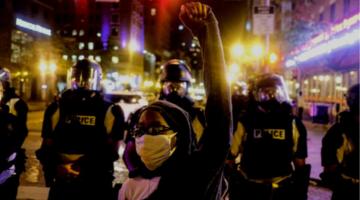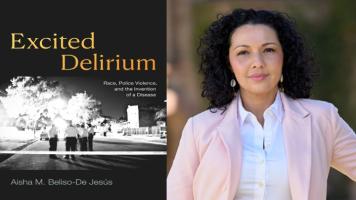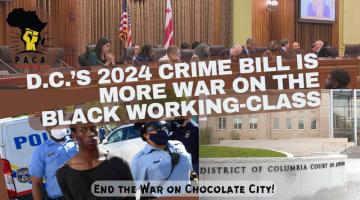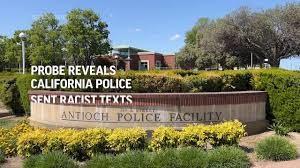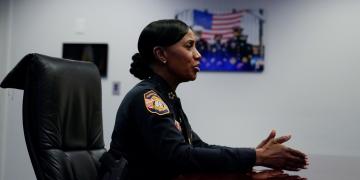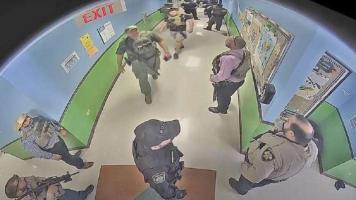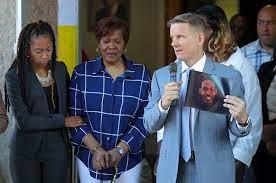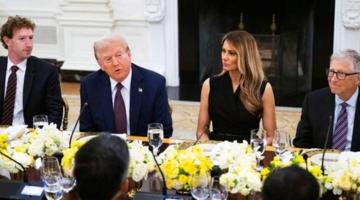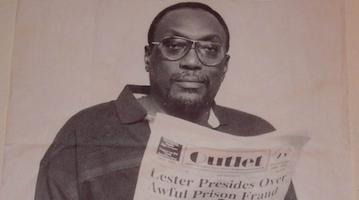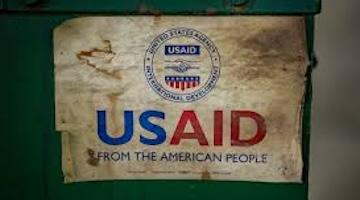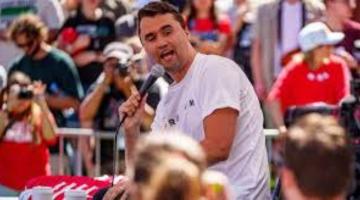“All you could feel was that machine he was running, that box with the wires on it.”
This excerpt recounts some of the torture unleashed by police in Chicago during the 1980s, under Police Commander Jon Burge.
Flint Taylor, a founding partner of the People’s Law Office in Chicago, has spent almost 50 years defending some of the most vulnerable people within the criminal legal system. In his new book, The Torture Machine: Racism and Police Violence in Chicago, [Haymarket Books] Taylor describes the history of systemic violence running rampant within the Chicago Police Department. It’s a history he knows all too well from his work with the Fred Hampton assassination case, among many others. This excerpt recounts some of the torture unleashed by police in Chicago during the 1980s, under Police Commander Jon Burge. During this time, Burge led officers in a manhunt following the deaths of two police officers. The following is a graphic account of the torture endured by Andrew Wilson and other Black men at the hands of the racist Chicago police.
Just months before we finally settled the Hampton case, Chicago was rocked by a series of fatal shootings of police officers in broad daylight. On February 9, 1982, two uniformed CPD officers, Richard O’Brien and William Fahey, were shot and killed during a routine traffic stop on Chicago’s south side. They had just attended the funeral of a Chicago police officer who had been shot only days before. Two Black men fled the scene in a brown Chevy, and mayor Jane Byrne and her police superintendent, Richard Brzeczek, mandated what would become the most massive manhunt in the City’s history. Brzeczek designated lieutenant Jon Burge, who headed up the Violent Crimes Unit at Area 2, to direct the search for the killers. The geographical area policed by Area 2, which covered most of Chicago’s predominantly African American far south side, became the main focus of the manhunt.
“Mayor Jane Byrne mandated what would become the most massive manhunt in the City’s history.”
Under Burge’s command, incensed CPD officers kicked in doors, ransacked homes, beat up numerous residents, and, once suspects were in custody, tortured those Black men they suspected of either being involved in or having knowledge of the crime. Several had bags placed over their heads in what is known in the international torture lexicon as “dry submarino,” at least one man was beaten on the bottoms of his feet and testicles, and another was taken to a police station roof, where one of his hands was placed in a bolt cutter. Upward of two hundred complaints were filed with the CPD by abused persons, ranging from mothers and a fireman and a taxi cab driver to alleged street gang members. Local civil rights leader the Reverend Jesse Jackson publicly likened the manhunt to Kristallnacht, the bloody nighttime raids on Jewish homes and synagogues that were perpetrated by the Nazis in November 1938. Many of the complaints were collected by the president of the well-respected Black Bar Association, Ronald Samuels, who made several phone calls and sent urgent letters and a telegram to Superintendent Brzeczek in an unsuccessful attempt to speak directly with him about the “explosive situation” in the Black community. A Fraternal Order of Police (FOP) leader offered a $10,000 reward, while admitting that there was “a lot of anger among the men,” and lamenting, “There is no respect out there for the man in blue. When policemen in full uniform are getting shot in broad daylight, the uniform means nothing.”
By February 12, the investigation had zeroed in on a group of young men who lived close to the murder scene. A contingent of Area 2 detectives, including Frank Laverty — a stand-up cop who believed in telling the truth — went to the men’s house and took six of them into custody. Laverty was about to transport them to Area 2 when Burge approached him and directed him to relinquish custody because Burge intended to take them to police headquarters at 11th and State for interrogation. All too aware of Burge’s reputation, Laverty pointedly told his boss, “He’s cuffed, he ain’t hurt, he ain’t been touched.” Laverty later told me that he “cared more about the case being done right than about some punch in the head.”
“Jesse Jackson publicly likened the manhunt to Kristallnacht.”
Burge scowled at Laverty and went off with a few trusted detectives and the captured suspects to 11th and State, which housed both the CPD’s detective headquarters and Superintendent Brzeczek’s office. Burge was met by the chief of detectives, Bill Hanhardt (who would later spend ten years in federal prison on corruption charges). Primary among the suspects was Donald White, who Burge and his men had concluded was one of the killers. Donald, his brothers Lamont and Walter, Anthony Williams, and two other associates were put in separate rooms. Donald, a slight and nervous man who went by the incongruous nickname of “Kojak,” repeatedly told the room full of menacing detectives that he “didn’t shoot no police.”
Detective Fred Hill, who Laverty claimed had a reputation as a violent racist, told Donald that he was “tired of this fucking shit,” and pulled out a plastic bag. Hill placed the bag over Donald’s head, and while he was gasping for air, the detectives beat him all over his head, “just beating me, beating me.” When he persisted in denying that he shot Fahey and O’Brien, Hill and his cohorts again subjected Donald to dry submarino. With his head pounding, Donald, who had asthma, started to scream and plead for the detectives to stop. At this point, Hill shifted his interrogation tactics, declaring that Donald “knew who killed the police.” Further denials led to Hill pulling out his revolver, declaring that he should make Donald run and “shoot the shit out of you and say you tried to escape.”
Donald’s brothers were spared the submarino treatment, suffering instead only brutal beatings. Donald was taken to the polygraph office in the headquarters building for a lie detector test. The civilian examiner was outraged by Donald’s bloodied physical appearance and engaged in a heated argument with the Area 2 detectives who had brought him there. This argument later led to the examiner’s being fired.
“Burge said that he was ‘going to shoot this nigger.’”
Meanwhile, screams were also emanating from the other interrogation locations as Burge and his detectives moved from room to room. Anthony Williams, nicknamed “Mertz,” later identified Burge as one of his interrogators. Burge cuffed Anthony to a chair, beat him with a phone book, and placed a plastic bag over his head. He then said, “Let’s take the cuffs off him, take him to the staircase, shoot him, and say he was trying to escape.” After consulting with a detective for a moment, Burge returned to the room, pulled out a long silver-barreled gun, said that he was “going to shoot this nigger,” and put the gun to Anthony’s head. Anthony was saved from further abuse when a Black cop entered the room. After Burge left, the officer told Anthony to pretend that he was being beaten, in case Burge was listening.
A high-ranking Cook County assistant prosecutor from Richard M. Daley’s state’s attorney’s office, Mike Angarola, was also present at 11th and State during the interrogations and was reporting to Daley’s first assistant, Richard Devine. According to Walter White, Angarola was present when detective Fred Hill beat him. In contrast, a Black Area 2 detective named Sammy Lacey and the Black commander of Area 2, Milton Deas, who had reported to headquarters after hearing that the cop killers had supposedly been captured, were relegated to an office distant from the interrogations.
As a result of the brutal torture, Anthony Williams, Donald White, and Donald’s brothers gave the detectives information that linked two of their associates, Andrew Wilson and his brother Jackie, to the killing of officers Fahey and O’Brien. Attorneys Devine and Angarola then arranged for the White brothers to be placed in protective custody, with a financial reward that was accompanied by the implicit understanding that their torture would not be revealed.
By now, both Mayor Byrne and Superintendent Brzeczek were actively involved. Both had visited Area 2, and Byrne had given Burge and his detectives a pep talk that urged them to solve the crimes by any means necessary. Byrne had offered a $50,000 reward for information leading to the apprehension of the killers; she met with an informant who gave her relevant information that was passed on to Brzeczek and, in turn, to Burge. In response to the groundswell of complaints from the Black community, Brzeczek chose to call in his Black command staff and urged them to help cool out the community, but he made no effort to tell his white command staff — or Burge — to stop the brutality.
“Both Mayor Byrne and Superintendent Brzeczek were actively involved.”
Accompanied by a deputy superintendent and a battery of Area 2 detectives, Burge led a 5:00 a.m. raid on a basement apartment on Chicago’s west side. Shirtless and asleep on a couch, Andrew Wilson was awakened as the raiders kicked the door down. Burge and his men threw Andrew to the floor and Burge “walked over” his neck. As they dragged him to a police car, Burge told the arresting detectives not to “mess with him” now; they would “get him at the station.”
Andrew was transported by a car full of detectives back to an old police edifice at the corner of 91st Street and Cottage Grove. He was dragged up to the second floor, where Area 2 was located, to a room full of screaming and hollering officers. As Andrew later described it:
They beat me up. They was kicking me around and slapping me on the floor. They grabbed a bag out of the garbage can, a gray garbage bag, and put it over my head. I was scuffling with them. I bit through it. They took it off of my head and one of them burned me on my arm. They slapped me back down on the floor but the big one, he kicked me, that’s how I got my eye messed up.
Burge then entered the room and voiced his displeasure, saying that he had told the detectives not to “mess his face up.” He admonished them that there would not have been any marks on Andrew if he had administered the abuse.
In the room next to Andrew was Doris Miller, a postal carrier who had lived in the same neighborhood as the Wilson brothers on Chicago’s far south side and had watched them grow up. The investigating detectives had information that Doris, who had never before been arrested, might have transported Jackie Wilson to an apartment hideout sometime after the killings, so they had raided her house at about 1:25 a.m. and took her into custody for being an “accessory to murder.” She was taken up the back stairs, to avoid the TV camera crews that were already encamped at the front of the building, and was handcuffed to a ring on the wall, where she remained until, around dawn, she was moved. The door to the adjoining room was open, and she saw Andrew, bare-chested and covered with sweat, sitting on a stool. Soon after, she heard the sounds of a body hitting the floor, and a voice that she recognized as Andrew’s “moaning, pleading, and begging for mercy,” and repeatedly denying that he did anything.
Doris heard a detective tell Andrew, “Look, motherfucker, we are going to take you out of here now, and if you try anything, we will blow your head off.” Andrew was then taken to a small interrogation room with a window that faced south onto 91st Street. Under the window stood an old-fashioned ribbed steam radiator, which Andrew, who had only a first grade education, referred to as a “heaterator.” On each side of the window above the radiator was a handcuff ring. Across the street was a Chicago Fire Department station.
“She heard the sounds of a body hitting the floor and a voice begging for mercy.”
Andrew asked for a lawyer. Burge ignored his request, telling Andrew that he was going to confess, because Burge’s reputation was at stake. Detective John Yucaitis, a longtime Burge associate, then entered the room with a brown shopping bag. As Andrew described it, the bag contained Burge’s “little gizmos” — a black box that had a crank and wires, and another device that was round and black, looked something like a hair dryer, and “had a plug on it.” The wires that came out of the box had small clamps at the ends, which Yucaitis attached to Andrew’s nose and ears. Then the torture by electric shock began.
Andrew reacted to the shocking by kicking Yucaitis, who was squatting in front of him, cranking the black shock box. Yucaitis responded by punching Andrew in the mouth and then administered another round of shocks by turning the crank on the box, causing Andrew to start shouting. Sammy Lacey, who had come into Area 2 to submit his overtime sheets, heard the shouting, as, no doubt, did many of the high-level CPD brass and assistant prosecutors who had flocked to Area 2 after the arrest was announced. Apparently in response to the cries, someone came to the interrogation room door, the shocking stopped, and the interrogators left the room.
The detectives then took Andrew to another room where assistant state’s attorney (ASA) Larry Hyman was sitting. Hyman was a supervisor in the Cook County state’s attorneys’ Felony Review Unit — a unit of lawyers whose assignment it was to take confessions obtained by police interrogators. Hyman and the detectives fully expected that Andrew was ready to give a full confession. Instead, Andrew said, in the presence of several of his torturers, “You expect me to make a statement after all of them tortured me?” Hyman asked, “What?” But Andrew, intimidated by all the detectives in the room, said no more. Hyman then angrily told the detectives to “get the jagoff out of here.”
“Yucaitis was cranking the black shock box.”
Back in the interrogation room, Andrew sat in the chair, handcuffed to a ring on the wall. After about half an hour, Burge returned and declared that it was “fun time.” Burge, with the aid of another officer, put a second set of cuffs on Andrew, attaching one set to each wrist, had him kick off his boots, and cuffed his ankles together. Burge then took out the black box, attached a wire to each of Andrew’s ears, and cranked. Andrew knocked the wires off his ears, and after they were reattached, he knocked them off again and fell out of the chair. Frustrated, Burge and the other officer cuffed him to the rings on the wall, one arm on each ring, stretching him across the radiator, and reattached the wires, this time to his pinky fingers. Burge, now sitting in the chair with the box in his lap, started “cranking and cranking and cranking.”
Although the shocking forced Andrew’s body against the hot radiator, he did not feel the burning heat because the shocking was “in his head,” flickering like a light, causing him pain and to constantly grind his teeth. As Andrew described it:
I wasn’t paying no attention, but it burned me still. But I didn’t even feel it. All you could feel was that machine he was running, that box with the wires on it. That took over. The radiator didn’t even exist then. The box existed.
Andrew was screaming and shouting as Burge continued to shock him, while the other officer kicked Andrew in the back. They then stood him up and rearranged his cuffs. Burge, brandishing the hair-dryer-like device, ran it gently between Andrew’s legs. A tingling sensation gave way to a sharp jolt when Burge jabbed this shocking device into Andrew’s back. Andrew’s face smashed into the grill that covered the window, and he started to spit up blood. Only then did the torture session stop.
This article previously appeared in Truthout, with permission from the author.
COMMENTS?
Please join the conversation on Black Agenda Report's Facebook page at http://facebook.com/blackagendareport
Or, you can comment by emailing us at comments@blackagendareport.com

